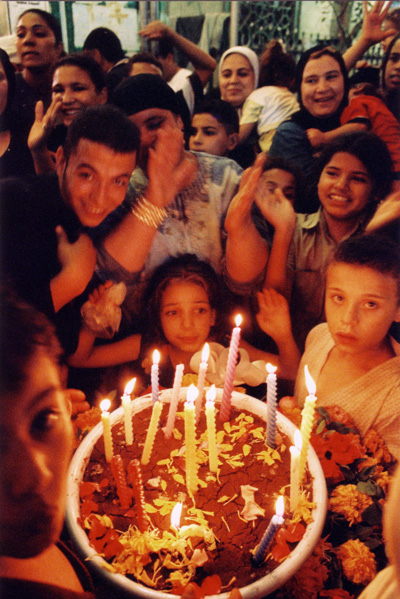
Henna procession at the mawlid of as-Sayyida
Sakina, an early descendant of the Prophet Muhammad, in Cairo
At some mawlids, like in this picture, henna is
distributed to the people at the shrine is celebrated
before the final night of celebration, a custom
borrowed from wedding celebrations. The analogy with
weddings is not a coincidence: A mawlid is often also
called "farah", a festivity of joy, a word
that also means wedding in Egyptian Arabic. On the one
this is related to Sufi spirituality: mawlids are
usually celebrated on the date of death of the saint
because it is seen as the real birth of a mystic, his
union with God. On the other hand, it is an indication
of the festive atmosphere, for the prevailing emotion
of a mawlid is joy: religious joy for the pious person
whose memory is celebrated, communal joy of the people
who come together in celebration, and profane joy for
the many lights, sounds and attractions of the
festival. For some Muslims, this moment is joy is
problematic however. They believe that religion should
be expressed by constrained and disciplined piety and
should not be an occasion for listening to music and
eating sweets. But the holy texts of Islam (the
Qur'an and the tradition of the Prophet Muhammad) do not provide a clear judgement on the issue
because it is not simple an issue of do's and
dont's. It is a matter of different
understandings of religion and the sacred. The people
who celebrate mawlids see the sacred as a power, as an
active grace pf God that can be expressed in many ways
and encompass all fields of life. The people who
criticise mawlids see the sacred as something
vulnerable, an intellectual attitude that is at risk
of being tainted at any time by, say, sweets and
music.
previous image / return to the gallery / next image
Cairo, July MMIII, small frame colour negative, scan from c-print
(c) Samuli Schielke